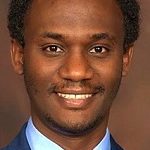 Source: AdobeStock.
Source: AdobeStock.
Friday's job report might seem familiar with jobs rising and unemployment falling, but there are some signs that employers have started pressing the brakes as interest rates rise and recession worries grow.
The U.S. Bureau of Labor Statistics reported there were 152.7 million seasonally adjusted jobs in September, an increase of 263,000, or 0.2%, from August and up 3.7% from a year earlier.
Recommended For You
The unemployment rate was 3.5% in September, down from 3.7% in August and returning to its July level. It was 4.7% in September 2021.
Average hourly earnings were $32.46, up 0.3% from August and up 5% from a year earlier.
NAFCU Chief Economist Curt Long said the September employment report continued recent patterns as jobs expanded at a strong clip, the unemployment rate declined and wages grew at a modest rate.
 Curt Long
Curt Long "There were no signs of easing labor force strains as the participation rate ticked down while average hours worked increased," Long said. "This report is a clear green light to the FOMC to proceed with another 75 basis point hike next month."
CUNA Senior Economist Dawit Kebede said there is still a "big imbalance" in the labor market even as the number of the number of unfilled jobs per unemployed person fell from 2 in August to 1.7 in September as job openings fell by 1.1 million.
 Dawit Kebede
Dawit Kebede "A decline in hiring demand is good news for the Federal Reserve which is hoping to create some slack in the labor market," Kebede said. "However, a lower unemployment rate is not a step in the right direction when the Federal Reserve is tightening monetary policy to cool an overheating economy."
Mike Fratantoni, chief economist for the Mortgage Bankers Association, said the sharp drop in job openings suggests "employers are first moving to eliminate those openings and slow the pace of hiring before turning to layoffs as the economy cools."
"While the pace of growth slowed in September to 263,000, this is still faster than can be sustained in the U.S. economy over time. And other data clearly signaling a slowing economy led us to forecast a sharp drop in job growth over the coming months," Fratantoni said.
During a webinar sponsored by Origence on Thursday, economist Elliot Eisenberg predicted a recession is almost inevitable. He said it is likely to begin next year in the first quarter or second quarter and might last a year. "Nothing painfully long; it's a garden-variety recession," he said.
 Elliot Eisenberg
Elliot Eisenberg Eisenberg said inflation has peaked, but the Fed will keep raising rates until inflation falls to close to its 2% goal, and by then the unemployment rate will have risen to 5% to 5.5%.
He predicted the Federal Open Market Committee will raise the federal funds rate 75 basis points at its next meeting Nov. 1-2, 50 bps at its Dec. 13-14 meeting and raise it another 25 bps before June 2023, bringing the federal funds rate to 4.6%.
Long also predicted a 75 bps hike by the Fed in November, while Fratantoni said MBA economists think it might be less.
"We expect the Federal Reserve will increase rates by at least another 50 basis points in November and could do more if inflation fails to decelerate," Fratantoni said.
© Touchpoint Markets, All Rights Reserved. Request academic re-use from www.copyright.com. All other uses, submit a request to [email protected]. For more inforrmation visit Asset & Logo Licensing.







